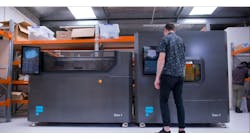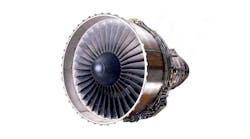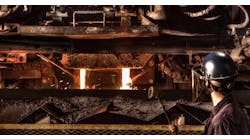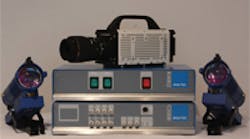A 200,000-frames-per-second high-speed video camera with Imatek C3008 eight-channel data acquisition controller, K4002 automated camera lighting controller, and lights.
Impact testing, particularly instrumented impact testing, is now widely used for investigating the properties of materials and structures. High-speed photography has historically been a method for determining the behavior of specimens under very high rates of deformation, but the high costs involved and the technical difficulty of getting good results has limited its adoption to a relatively small number of users.
However, in the last decade, according to Nick Osborne, the technology of high-speed digital video photography has progressed to the point where it will begin to improve many aspects of impact testing. Osborne is the technical director of Imatek Ltd., a designer and manufacturer of impact testers, drop weight testers, drop weight tear testers (DWTT) and rheometers.
Force and acceleration are the quantities most commonly measured during an impact event, and the technologies for doing so are relatively well developed. Sample deflection is also an important value that often needs to be determined, but this is not so easily done at the high rates of deformation that are typical.
A solution is found in the latest generation of cameras with CMOS sensors, capable of more than 100,000 frames per second. According to Osborne, a crucial advantage for these systems is that they are relatively easy to use, certainly as compared with high-speed photography. Often the cameras are self-contained, requiring just a power supply and a gigabit Ethernet or Firewire connection to a computer.
Modern high-rate systems fully integrate video capture with data capture from other sources, for example force transducers, strain gauges, and accelerometers. It is critical to synchronize all the channels, so that individual video images can be correlated with other signals. They also will be able to turn lights on and off automatically, at either side of the test event, minimizing any thermal effects on the specimen (and ensuring that the thermal history of all specimens is reproducible.)
Analysis software forms an important part of the system, Osborne points out. Having an integrated system means that the operator has only to enter parameters such as data-capture times and trigger conditions one time, simplifying the test procedure and reducing the possibility of time-consuming mistakes. This also simplifies data extraction and analysis, because the transducer data and video data are all in one place, and time-correlated.
A high-speed video sequence can yield not only qualitative data but also quantitative data. Qualitative information can be used to make sense of data that is measured on other channels. High-speed video can be extremely useful when testing complex structures, such as automotive and aerospace components. It can be used to determine the mode of failure, e.g., where cracks initiate and how they propagate
Verification of the test method can be obtained by comparing sample displacements obtained from the video sequence with those calculated by other means, for example from the force data.
High-speed video also can be used to obtain displacement data, frame by frame, to obtain a displacement vs. time curve. Less commonly, it can be used to obtain angular information.
High-quality data requires high-quality input, which means good optics, a high-contrast subject, a “fast enough” shutter speed and an accurate calibration procedure. Given all of that, however, it is possible to measure positions with sub-pixel precision (to better than a tenth of a pixel in the right circumstances).
The main advantage of using video in this way is that it allows users to obtain displacement data from specimens that are almost impossible to instrument any other way, and to do so using a non-contact method that has no consumables.
One application is in high-rate tensile testing (at rates of up to 1,000/sec or more), where the use of high-speed video eliminates the need for expensive strain gauging of specimens, and allows measurement of very high strains in highly elastic materials.









